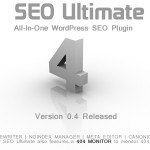Competitive keywords crumble from implementing superb site architecture reinforced by a combination of theme-relevant content, strategic secondary navigation and contextual links.
Backlinks are only partially responsible for slaying competitive coveted keywords,so before one link is built, make sure your on page SEO is rock-solid with these priceless SEO techniques.
If there is one thing Google likes more than links, it’s on page perfection. Put simply, implementing theme relevant silo website architecture (essentially putting everything in its proper place) is one of SEO’s best secrets.
One of the most widely misconceived aspects of siloing your website content, internal navigation link structures or contextual links is what goes where; well, not anymore…
Rarely do I openly give kudos to others, but Sue “The Architect” Bell, the CEO of Theme Zoom gives away one of the most guarded SEO tips in the toolbox (right up there with using the H1 as a link to other supporting pages in the daisy chain) by showing in layman’s terms an extremely effective site architecture strategy involving a process of layering nested tiers of content to attack multiple clusters of keywords simultaneously. To see Sue’s original post – Increase Rankings by Adding Silo Structure to an Unstructured Site follow the link for the back story.
More importantly, using structure such as this is a perfect method for augmenting legacy content that is either (a) locked behind an antiquated or content management system devoid of SEO friendly parameters or (b) this tactic is excellent for augmenting existing websites or pages you want to leave intact, but want to add a hybrid/dynamo for generating dynamic ranking power.
Whatever the reason, the take away is a revealing glimpse behind SEO that most either don’t know about, or care to keep silent because put simply, these tactics are extremely effective, regardless of the keyword, the competitors or how many links you throw at it.
With the witch hunt on links taking its toll on those who pushed it too far, or got attacked by the feared Panda update, there is nothing like leveraging the power of on page SEO to ween ones website off links and replace vital ranking factors from within (using on page SEO).
SEO can be likened to a process of three layers. These layers must co-exist in balance in order to cultivate the proper conditions which spawn page authority (which in turn leads to domain authority).
This holistic approach to SEO involves proper foundation (starting with the keywords you are targeting); as Sue’s video on website silo architecture above perfectly denotes, website architecture is the cornerstone of the first layer. The next layer is the semantic overlap of content and internal link anchor text selection, and the capstone is the type and quality of links from the right places to the right pages that gives the other two dynamics fusion.
If you push any of the three layers too far without balancing the other, you only undermine your own effectiveness and/or delay the amount of time it takes to reach the top 10 – if you had applied a more methodical, patient or strategic approach.
There is no penalty for making your website more relevant, nor is there for making it easier for users to navigate from the selective cross-linking and prominence in search engines (once your themes start ranking).
We hope you found this information informative and fulfilling. Stay tuned for more useful SEO Tips, tactics and techniques from SEO Design Solutions.








Man I’m learning so much from your posts Jeffrey!
Wondering if you could elaborate on your comment/hint:
“right up there with using the H1 as a link to other supporting pages in the daisy chain”
What exactly do you mean by daisy chain and how do you link with a Header?
thanks again!
Kevin
Use the h1 tag with an href link to the primary landing page (using the anchor text you intend to rank the landing page for). Ring fencing means keeping the link equity moving up the chain (not having the same old navigation on every page) and controlling which pages link to other pages strategically to impact page weight, relevance and rankings.
So you can’t be talking about the actual Post Title are you? I don’t see how that could work.
Rather just create other H1 tags elsewhere in our posts (perhaps even H2 or H3 would be beneficial if the H1 styling just doesn’t look right)?
Kevin
By Default Permalink is H2 tag in WordPress, I am suggesting you use H1 tag with anchor text link and link to category or preferred landing page from supporting page with keyword rich anchor (thus passing along citation to preferred landing page) from supporting page.
Is this an example of what you mean; the Links widget?
Resources
Kevin
‘Resources
Hi Jeffrey,
Thanks for the explanation – “I am suggesting you use H1 tag with anchor text link and link to category or preferred landing page from supporting page with keyword rich anchor (thus passing along citation to preferred landing page) from supporting page.”
Previously had a problem with H1 tag being used twice in a post, but will most definitely try this. Will go through the video again to make sure I get a proper ‘picture’ before implementing.